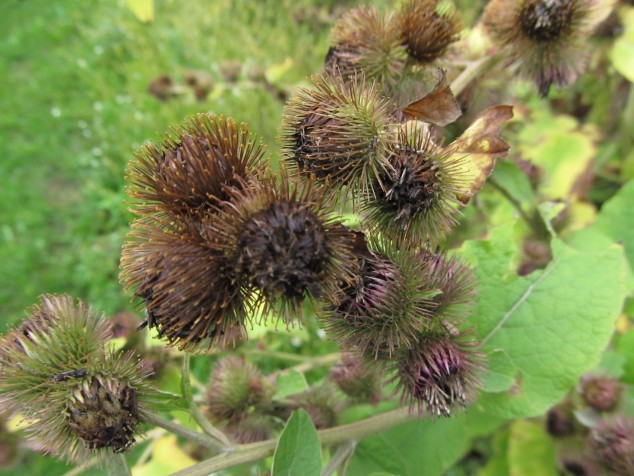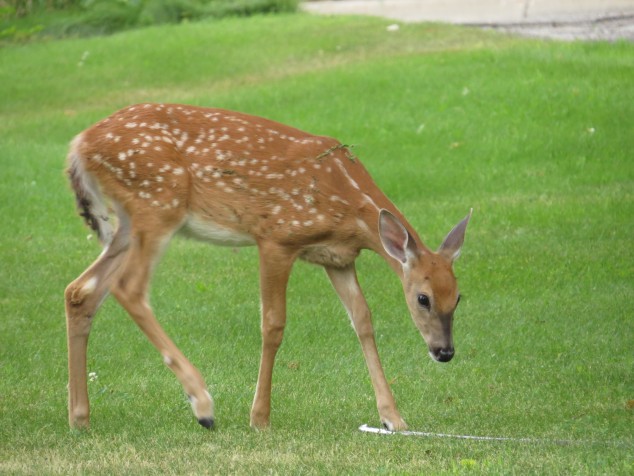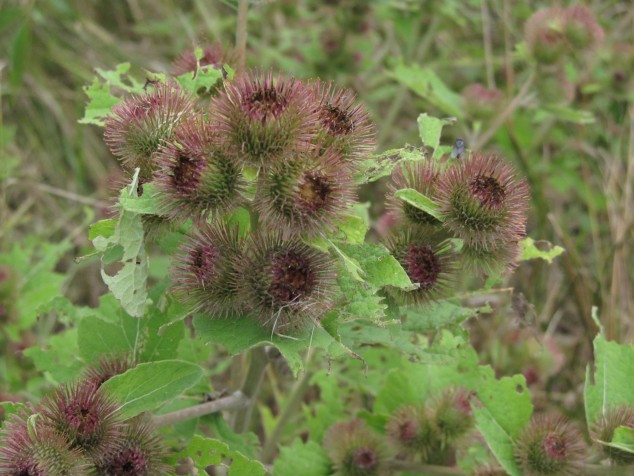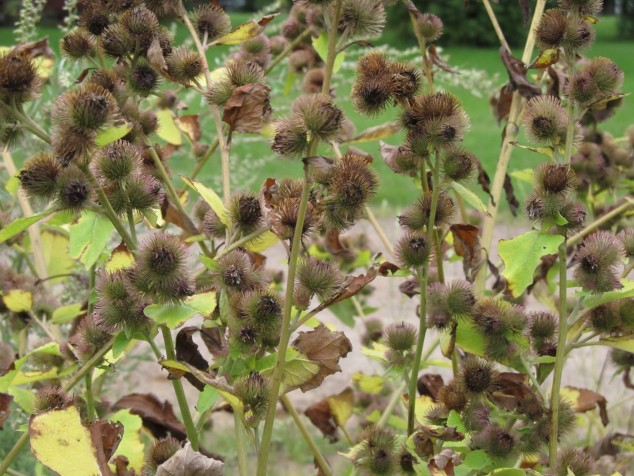The fawn came into the yard in the middle of the day–we didn’t see her twin or the doe. We had just been outside and had the water hose dripping at the base of the crabapple tree. She checked out the hose, the flat football that was left in the yard by the dog on her last retrieve, and the round, brown flax seeds in the flower garden before she wandered back to the woods. I noticed that she was covered by sticky burs on her withers, shoulder, flank, and tail. Anybody who has spent time hiking in the woods or prairies will know what it feels like to have some uninvited guests–cleavers, tick trefoil, or spanish needles–attach themselves to your pant leg, socks, or shoelaces. It’s annoying and bothersome–both to walk with them and try to remove them. The spotted fawn with her burs reminded me of the horse I had for more than twenty years of my life.
I bought Apples when I was fourteen years old with money I made cleaning out stalls at the neighboring horse farm. He was ten years old when I brought him home–a little red roan with a beautiful head, short ears, a red tuft forelock, and a long, full tail. That tail was a cocklebur magnet! He would come up from the pasture in the fall with his tail looking like a brown plank of wood–a prickly, sticky mess. So I would catch him, tie him up, get out a hunting knife and begin the slow, tedious job of removing each bur. It would be so matted with the burs that I would ‘saw’ through the hair of his tail with the knife to loosen sections, then pull the cockleburs out in clumps or one by one. None of this could have felt good to him, but he trusted me and calmly stood there until his tail was back to its free-flowing and foot-shorter state.
My morning walks take me past an open plot that despite its yearly mowing is sort of wild. This cocklebur plant was missed by the mower and bloomed purple as the burs started forming.
Cocklebur is a broad-leaved annual with rough triangular leaves. It can grow up to six feet tall on stout, spreading stems. The plants are toxic to pigs, cattle, sheep, horses, and fowls when at the seedling stage. Each plant can produce hundreds of burs.
The fruit is covered by strong, hooked spines and contains two seeds.
 As nasty as cockleburs are, they were the inspiration for a Swiss engineer named Georges de Mestral in 1941. When he and his dog were out walking in the woods and came home with these burs on them, de Mestral looked at them under a microscope. He saw the hundreds of hooks that attached so easily to fur and fibers. Over the next years, he developed the hook and loop in nylon and called it Velcro!
As nasty as cockleburs are, they were the inspiration for a Swiss engineer named Georges de Mestral in 1941. When he and his dog were out walking in the woods and came home with these burs on them, de Mestral looked at them under a microscope. He saw the hundreds of hooks that attached so easily to fur and fibers. Over the next years, he developed the hook and loop in nylon and called it Velcro!
Often in life we find something has ‘stuck’ on us without us being aware of how it happened. We walk around carrying it. It can be painful moving forward. We don’t know how to get rid of it. How in the world did this happen? We either learn to live with it until it falls away with time or we have a kind helper who lends a hand to untangle things. And sometimes, the very thing that clung to us and caused us pain is transformed into a new and wonderful creation.


